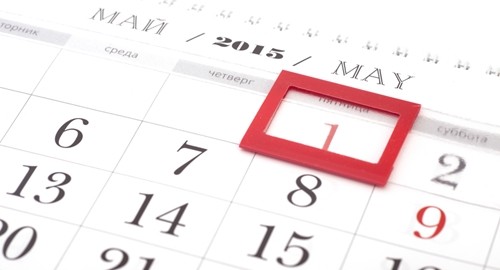You wake up in the morning and head into the office where you have dozens of emails waiting in your inbox. You have several projects going on, but with a handful of meetings scattered throughout the day, you don't know when you'll find time to get to any of them. So, what do you do? One of the most difficult parts about running a small business is that there are always any number of important things on your plate, but it's hard to fit all of them in without making some sacrifices. That's why it's so crucial to organize your schedule purposefully and meticulously – taking some time to organize could mean finding a way to fit everything in. Here are a few effective schedule organization tips to keep in mind:
There's an App for That
There are some people who love using paper calendars, but taking advantage of a calendar organization app can be beneficial in a lot of ways. First of all, no matter what you need help with, whether it's organizing a to-do list, managing tasks or planning an entire daily, weekly or monthly calendar, there's an app you can use. But another great benefit of using these tools is that they also often sync up with multiple devices – you'll be able to access your task manager or calendar from your desktop, laptop, smartphone and whatever other device you're using. Check out Google Calendar, Sunrise or Calendly to declutter your schedule.
Schedule Your Meetings Carefully
Meetings are one of the biggest productivity busters in a busy work day. It's often hard to fill in the time just before and after the meeting effectively, and multiple meetings mean huge chunks taken out of your day that could be spent checking off tasks on your to-do list. So, be careful when scheduling these time-shrinkers. Try slating all of your meetings each week over just one or two days. Or, at least try to fit them into your schedule back to back – say, only having meetings in the afternoons. That way, you'll be able to focus without distractions during the days and times you don't have meetings.
Take Time to Plan Every Morning
Rather than just jumping into checking emails or whatever else you do when you get to work each morning, set aside 15 minutes to plan out the day ahead of you. Reorganize meetings if you have to, prioritize your to-do list, and schedule time to take care of each task. You should even make time for lunch, breaks and smaller tasks like checking your email or filing paperwork. During the day, if you become distracted mid-task, use Post-It Notes or an online tool to remind yourself where you left off.
Use the Block System
Inc. magazine recommends including at least three 90-minute blocks within each day that you can use to get things done without interruptions. During these time periods, try to do as much as possible without checking your phone, updating your inbox or completing any other small distracting tasks. Close your office door and ask your team members to hold off on any questions or comments they may want to discuss with you.

